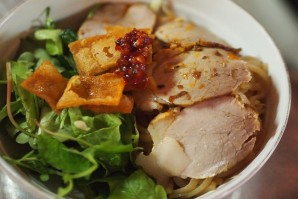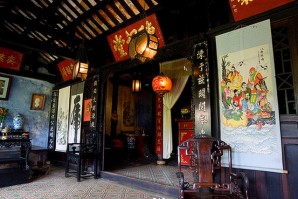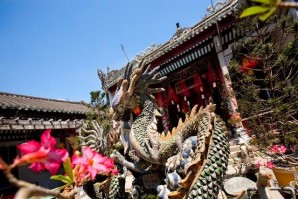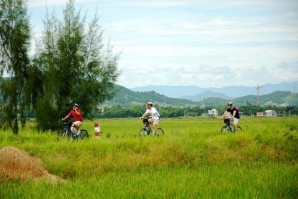19 Feb
Tan Ky House
Built two centuries ago as the home of a well-to-do ethnic-Vietnamese merchant, Tan Ky House has been lovingly preserved through seven generations of the same family. Don’t be spooked by the portrait of a stern-looking matriarch over the entry hall; this gem of a house is worth lingering in.
19 Feb
Assembly Hall of the Fujian Chinese Congregation
What began as a traditional assembly hall was later transformed into a temple for the worship of Thien Hau, a deity from Fujian province. The gaudy, green-tiled triple gateway was built in 1975.
19 Feb
Japanese Covered Bridge
This beautiful little bridge has become a modern-day icon of Hoi An. A bridge was first constructed on this site in the 1590s by the Japanese community in order to link them with the Chinese quarters across the stream.

17 Feb
Cao lau Hoi An (Hoi An vermicelli)
Cao lau noodles are carefully made from local new rice not stocked one. Water used to soak rice must be taken from wells in the Ba Le Village; noodles thus will be soft, enduring and flavored with special sweet-smelling. In addition, meat used to prepare for Cao lau must be loin or trotter.

17 Feb
The Tran Family Chapel
No one has the courage to state which exact place in Hoi An is most ancient and beautiful, but many people know the Tran Family Chapel is one of the oldest and most historical houses in this city. Located on the 21st, Le Loi Street, the house is a famous destination of Hoi An because it was built by Tran Tu Nhac, an intelligent and highly-respected governor in the Gia Long dynasty, as a reminder for the following generations to maintain the family long tradition.

17 Feb
The Chinese Assembly Halls
As the Chinese immigrants reached the central part of Vietnam known as Hoi An today, they decided to create the opportunities for themselves and the next generations to socialize and protect the Chinese traditions by building many Assembly Halls. Nowadays, even though not all of the halls stay the same, the five remaining ones (Fujian, Chaozhou, Hainan, Cantonese, and Chinese) become famous attractions of Hoi An.

17 Feb
Travel Que Herb Village
Tra Que vegetable village located in Cam Ha Commune, Hoi An Town (Quang Nam). Tra Que vegetable were famous for a long time with many vegetable products were grown on fertile soil, fertilized with seaweed from Co Co River so they have own unique flavor.













